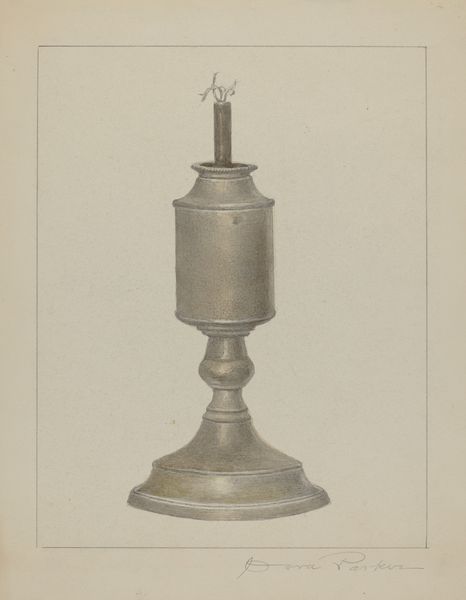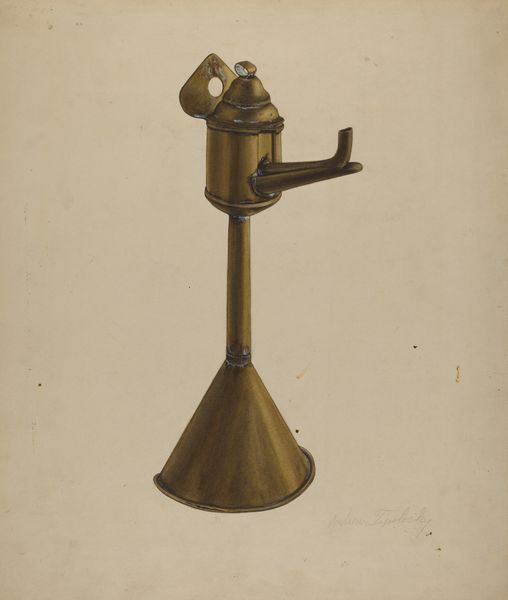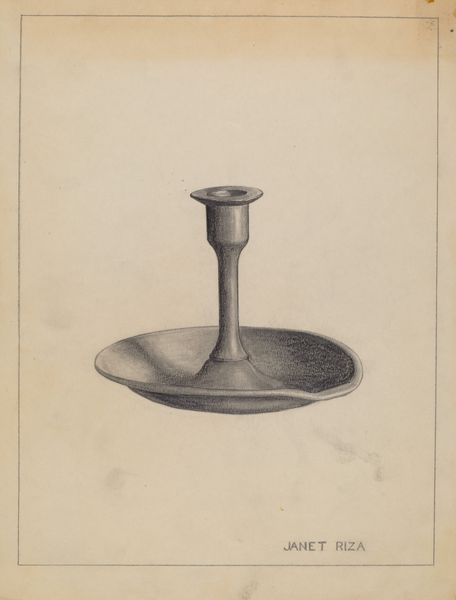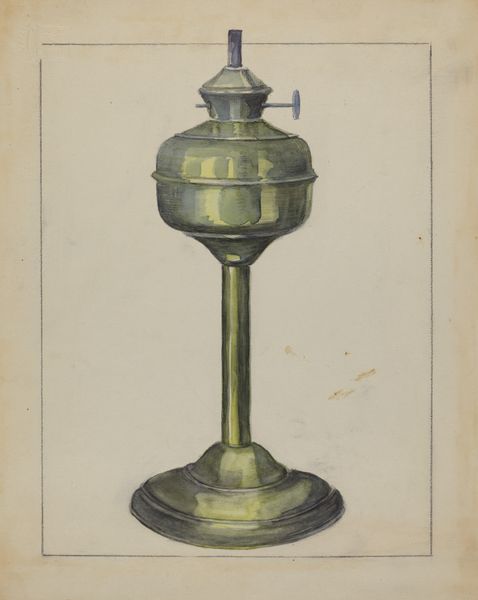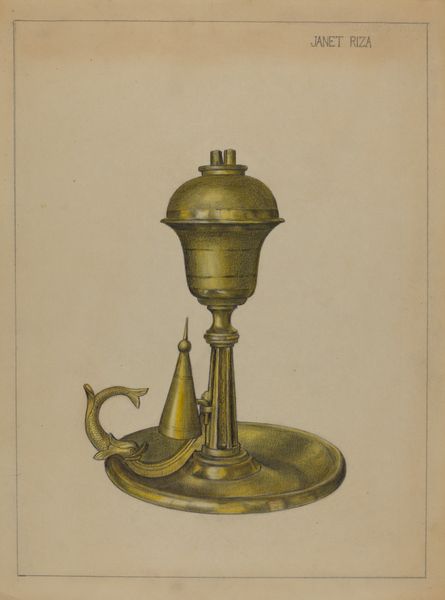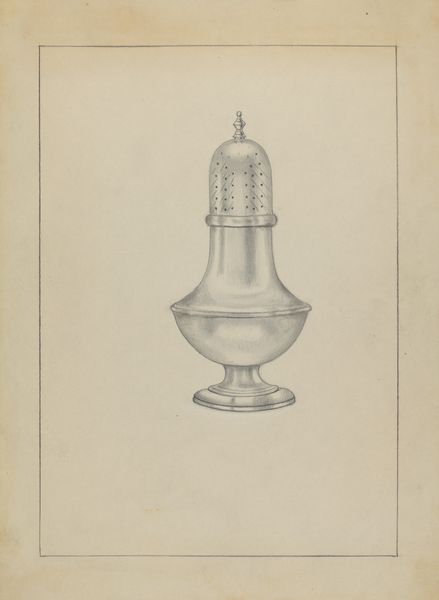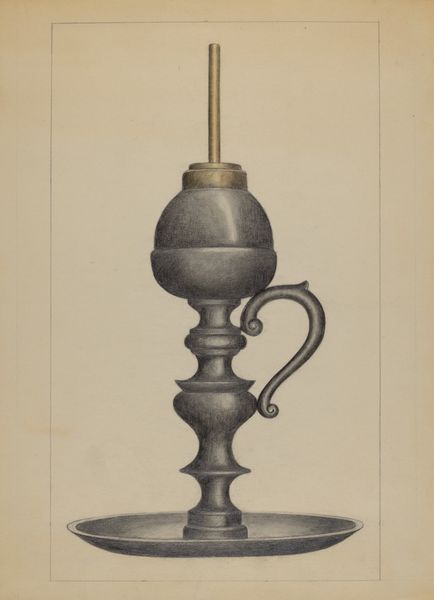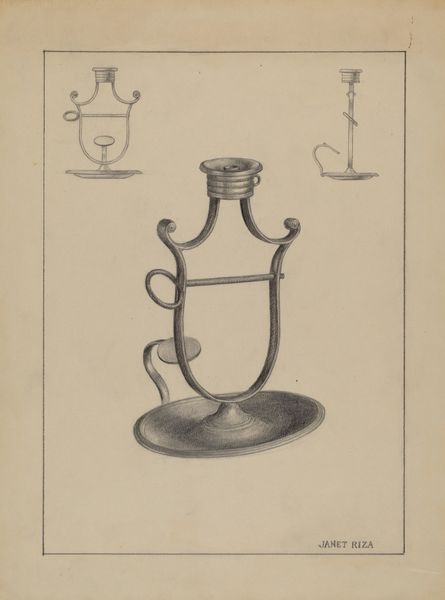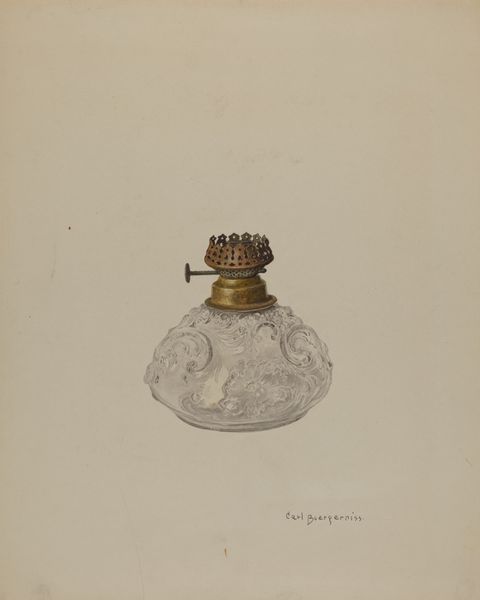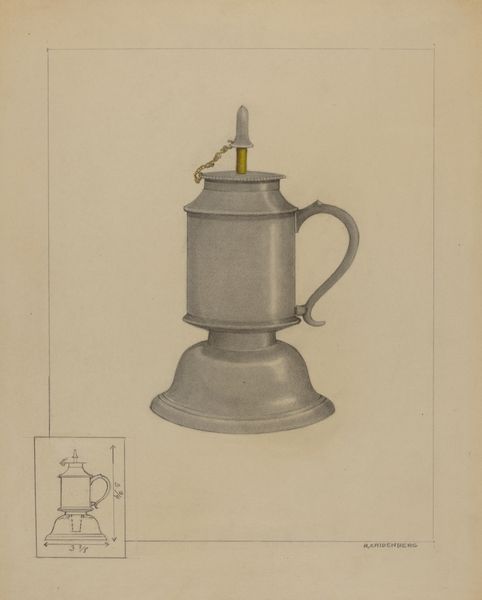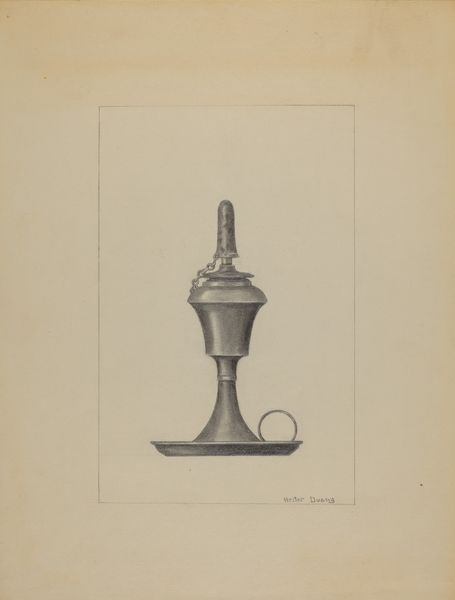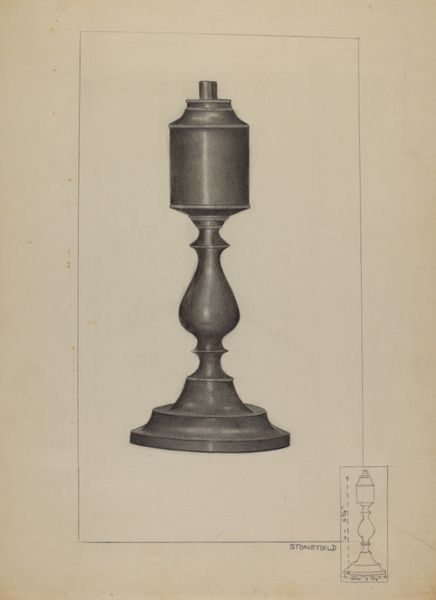
drawing, pencil
#
drawing
#
pencil
#
realism
Dimensions: overall: 30.4 x 22.9 cm (11 15/16 x 9 in.)
Copyright: National Gallery of Art: CC0 1.0
Curator: Looking at Albert Camilli's pencil drawing, "Pepper Grinder," circa 1936, I'm struck by the almost clinical depiction of this everyday object. There's a stark realism to it, wouldn't you say? Editor: Immediately, the focus on utility is clear; its quiet dedication to accurately render the curves and reflective surfaces gives it a subtle beauty and, despite its diminutive presence, has a curious monumentality. Curator: Right, and what’s interesting to me is how this seemingly simple object takes on a kind of weightiness in the context of the 1930s. The Depression, shifting social landscapes... A detailed rendering of a household object feels almost like a celebration of domesticity. Editor: I agree. It prompts thoughts about craftsmanship in a period of industrial expansion, too. The piece highlights labor by showing attention to detail and the inherent dignity of common materials that form the tools that give shape to our tastes. How did these tools infiltrate the American kitchen and subsequently alter what and how Americans eat? Curator: Absolutely. Think about the mechanization of food preparation during this time—the rise of canned goods, the focus on efficiency. The pepper grinder here stands in stark contrast to that. It’s an artifact reminding us of earlier modes of production and the ritual of grinding spices. The inscription "Actual Size" emphasizes the mundane of labor. Editor: The work brings questions surrounding value and purpose, too. By isolating an unremarkable object, Camilli compels us to consider what it truly represents in this context—more than an implement, it also functions as a metaphor. Curator: Indeed. I’d suggest, though, that it’s less a passive metaphor and more a reflection of a broader societal grappling with what constituted value in an era of economic hardship. Editor: Point taken. Overall, considering what it means to spotlight such a seemingly humble, practical piece is quite telling about the context in which it came to exist. Curator: It reminds us how looking closely at these pieces opens the doors to many possible meanings embedded within their era and production.
Comments
No comments
Be the first to comment and join the conversation on the ultimate creative platform.
